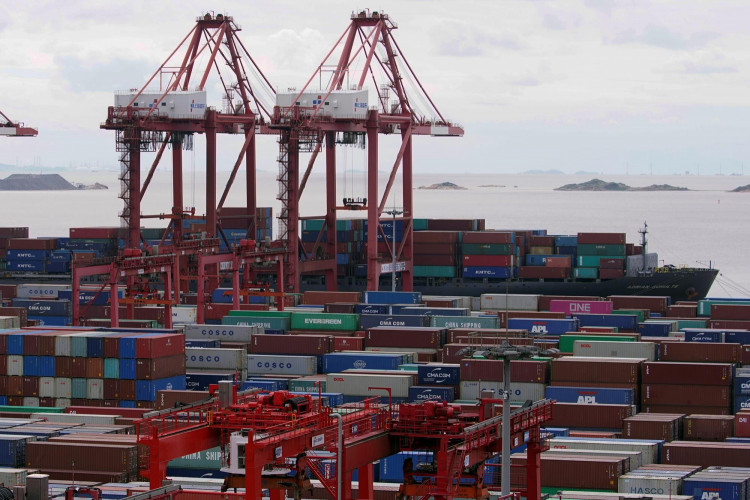In a surprising turnaround, China's exports have witnessed growth for the first time in six months, as indicated by November's customs data. This development breaks the streak of a persistent downturn, offering a glimmer of hope for the world's second-largest economy.
The 0.5% increase in exports, albeit modest, marks a significant reversal from the 6.4% fall observed in October and exceeds the anticipated 1.1% drop forecasted by a Reuters poll. Despite this upswing, imports slightly dipped by 0.6%, veering away from an expected 3.3% increase and indicating that domestic demand remains lackluster.
China's manufacturing sector presents a complex picture. While some manufacturing data for November suggests a need for further policy support, there's debate about whether sentiment-based surveys are overshadowing actual improvements in conditions. Notably, the Baltic Dry Index, a key indicator of global trade, reached a three-year high in November, suggesting heightened demand for industrial commodities, particularly from China.
China's trade with major partners like the United States, Japan, South Korea, and Taiwan has shown positive trends. However, Chinese manufacturers continue to face pressure, as evidenced by new export orders shrinking for the ninth consecutive month, according to China's official purchasing managers' index (PMI). This trend raises concerns about the sustainability of China's export resilience, especially given that the recent export growth has been partly driven by price reductions.
Despite the recent uptick in exports, the broader economic outlook for China remains cautious. The International Monetary Fund has upgraded China's growth forecasts for 2023 and 2024, but from a lower base, and Moody's recently issued a downgrade warning on China's credit rating. The Chinese economy continues to grapple with multiple challenges, including property weakness, high debt levels, and deflationary pressures.
As analysts delve into the details, it becomes apparent that sustaining this export growth might be challenging. Factors like cooling European and United States economies and China's reliance on domestic demand for growth in 2024 paint a complex picture. The recent export growth, while a positive sign, does not necessarily indicate a robust recovery for China's economy.
China's latest export data, indicating a break in the six-month decline, offers a momentary sigh of relief for the economy. However, the decrease in imports and the broader economic challenges that China faces suggest that this may not be a lasting trend. The country's economic future in 2024 and beyond will likely depend on a balance between sustaining export growth and reviving domestic demand.






